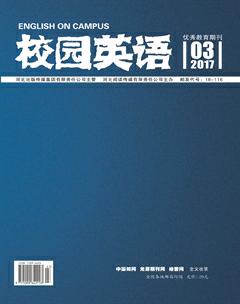Silk Road or Horse Road?
This book, written by an English academic Edward Burman and published in 2014, provides some very interesting and inspiring perspectives about Xian different from those of Chinese.
The first one is Burmans unconventional view about the Silk Road. He argues that the Silk Road should be re-baptized as the Horse Road because the Silk Road “only existed in order to procure and pay for horses for the Chinese empire”. According to Burman, during Zhang Qians western journey, he noted the celestial horses of “exceptional quality” in Central Asia. When he reported his discovery to the Emperor Wudi, the emperor decided to procure these horses because they were “far superior as war machines” to the native horses for fighting against his most pressing enemy, the Xiongnu. Burman argues that these horses are something that were “far more important than news about far-off tribes and countries” and “changed the history of the world from the early Xiongnu raids to the military supremacy of the Han dynasty and their effective control of China for 400 years”. Besides, these horses are also useful for domestic and international communication and transportation. Due to the vital role the horses played in the history of the Han dynasty, Burman proposes that the Silk Road should be named the Horse Road. He even proposes a further hypothesis that the Silk Road was “only” a horse road, and in some senses a “local” road since the road “reached as far as Ferghana and the sources of the valuable horses”.
The second one is Burmans critical opinion about Emperor Qinshihuang. According to Burman, although Qinshihuang is often credited with the “innovations” of a single standard for weights and measures, in fact similar measures had already been introduced by the powerful court advisor Shang Yang during the reign of Duke Xiao of Qin. Besides, “Were it not for the astonishing fact of his mausoleum and the rediscovered terracotta army, the fourteen-year rule of this dynasty could almost be consigned to a footnote in the long annals of Chinese history.”
The third one is Burmans introduction of Buddhism in Xian. He not only illustrates two Chinese progenitors of Chinese Buddhism Fa Xian and Xuan Zang, but also mentions the names of some Westerners who laid solid foundations for the dissemination of Buddhism, including An Shigao, Lokaksema, and Dharmaraksa. In addition, Burman analyzes the reason of the decline of Buddhism. According to him, when the Tang suffered economic troubles as a result of their war with the Uighurs and consequent loss of revenues from Silk Road trade, the possessions of the Buddhists made an irresistible target. “Monasteries were sacked and destroyed; their lands passed to the Emperor. Bronze statues were melted down to produce metal currency, gold and silver was simple added to the imperial treasury; less precious metals like iron were re-used to make agricultural tools.”
Furthermore, Burman made some impressive remarks about Chinese paintings, calligraphy, and poetry when illustrating the Tang dynasties. According to him, “Chinese paintings might charm us by their quaintness or by exquisite detail, but they are unlikely to draw us further into their world, for only those ‘who have acquired great learning can distinguish the coarse ones from the fine”. As far as the Chinese calligraphy is concerned, Burman says “This art is the most difficult for Westerners to understand since calligraphy, which for the Chinese is one of the highest forms of art is for us is well-nigh incomprehensible.” He proceeds to say that in the current age hand-writing is little appreciated in the West and they are reduced to a handful of commonly used computerized fonts. As for the poetry, a viewpoint that caught my eyes is Burmans explanation of Li Bais popularity among Westerners. He says “Li Bais work has always been attractive to Western readers since in some way his life was akin to that of the troubadour poets of Provence—themselves influenced by the Arab lyric poets through Spain and North Africa—in the 12th and 13th centuries”.
In a word, this book provides we Chinese readers with lots of unique and inspiring insights into Xian, which enable us to re-approach Xian through European eyes. In addition, it provides a broad cultural background of Xian to foreign readers, which enable them to know more about the city with an imperial past and thus an important role in the cultural history of China.
References:
[1]Edward Burman(2016).Xian Through European Eyes:Shaanxi Peoples Publishing House.
作者簡介:毋婀幸(1983-), 女, 陕西西安人, 汉族, 硕士, 西北大学现代学院, 讲师, 研究方向:翻译理论与实践。

